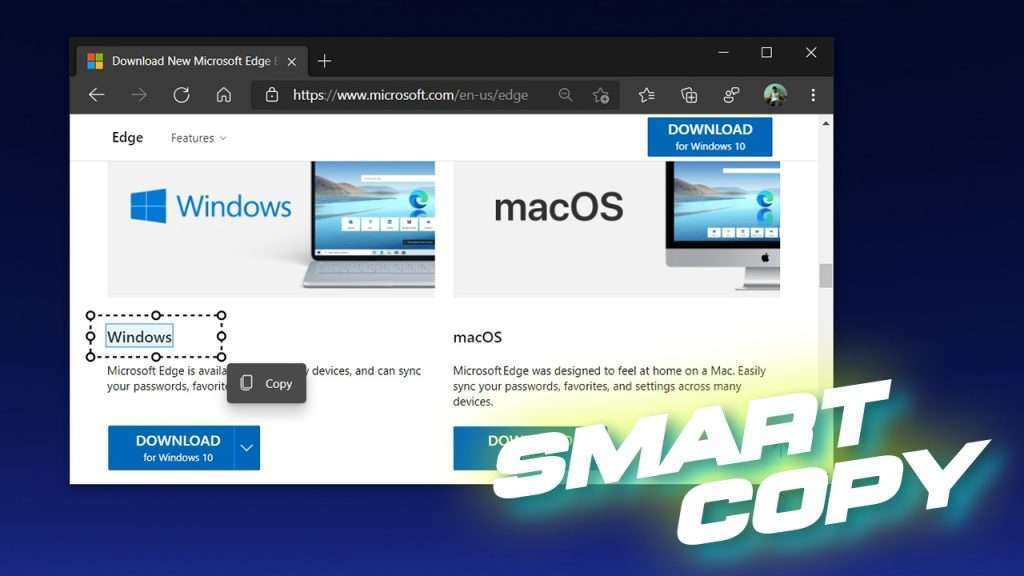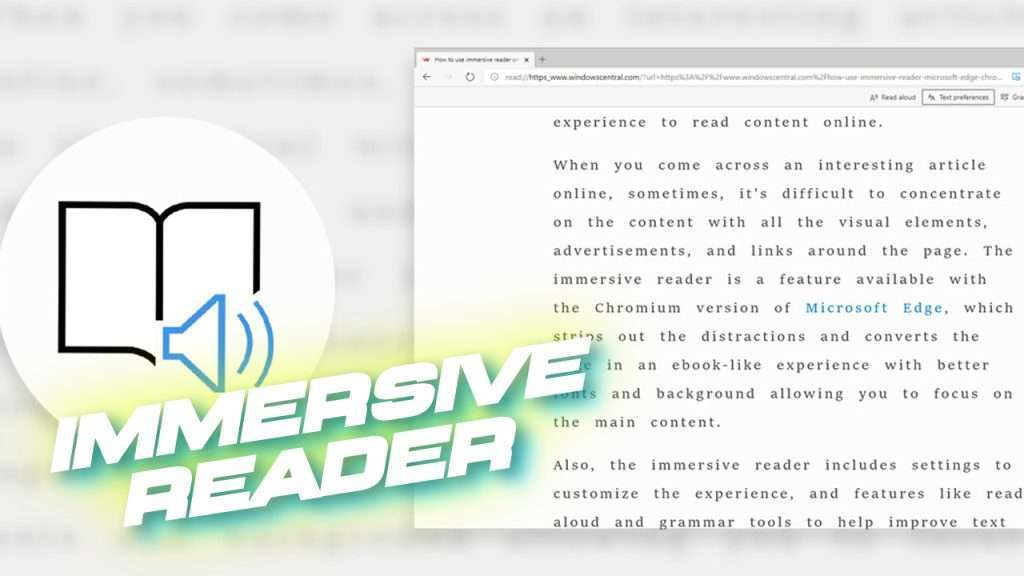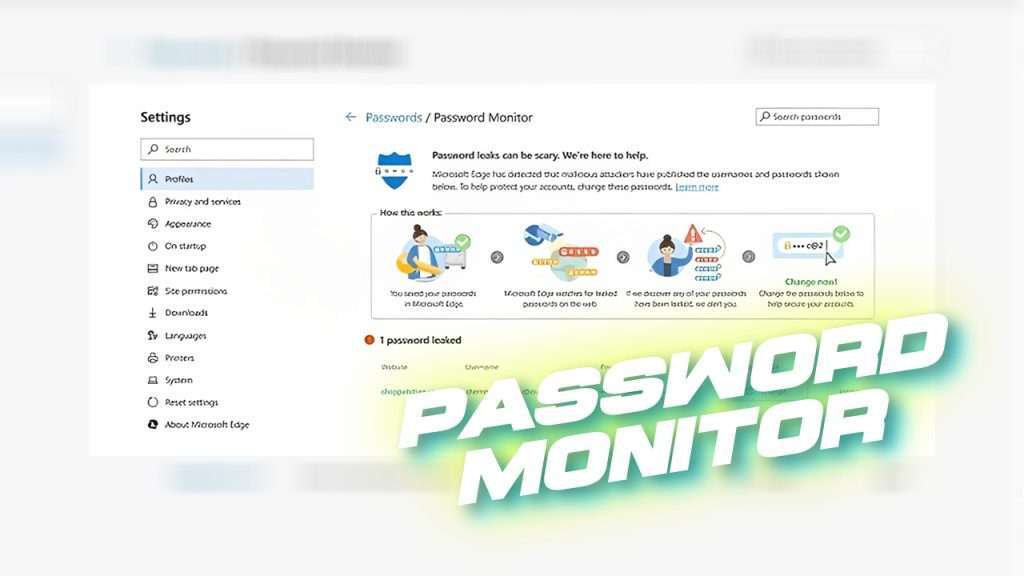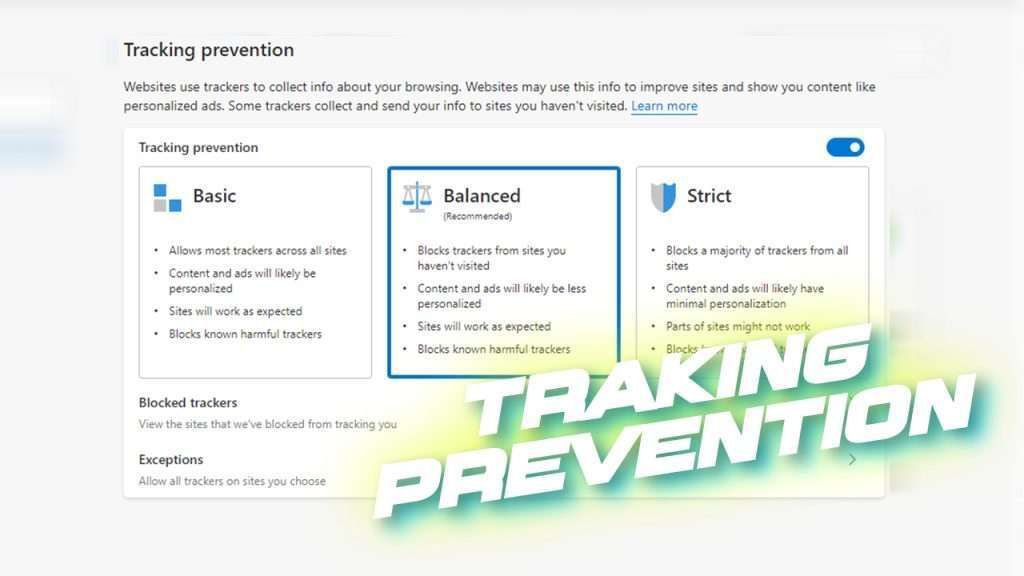
As the digital landscape continues to evolve, web browsers are constantly striving to offer more intelligent and personalized experiences to users. Microsoft Edge, the modern web browser from Microsoft, stands out with its innovative use of artificial intelligence (AI) to revolutionize the browsing experience. In this article, we will explore the remarkable AI features of Microsoft Edge that enhance productivity, security, and user satisfaction.
Smart Copy Feature
Microsoft Edge’s Smart Copy feature leverages AI algorithms to improve the process of capturing and extracting information from web pages. When users come across content they want to copy, such as text, images, tables, or complex layouts, they can utilize the Smart Copy feature. Traditionally, copying content from webpages often results in losing the original formatting. This loss of formatting requires manual reformatting when pasted into documents, presentations, or notes. However, with Smart Copy, the AI algorithms analyze the selected content in real-time and intelligently preserve its original formatting. For example, if you select a paragraph of text with various font styles, colors, and sizes, Smart Copy will identify and retain those formatting attributes when you paste the content elsewhere. The AI algorithms understand the structure of the content and its visual presentation, ensuring that the pasted content maintains the same appearance as the original webpage.

Moreover, Smart Copy goes beyond simple text copying. It can handle more complex elements, such as images and tables. When you select an image, Smart Copy intelligently extracts the image file and allows you to paste it into other applications or documents. Similarly, when selecting a table, the AI algorithms recognize the tabular structure and preserve it when pasted, making it easier to transfer data without losing the structure and formatting of the original table.
Immersive Reader Feature
Immersive Reader, an AI-powered feature in Microsoft Edge, is designed to enhance the reading experience on webpages and promote inclusivity. By leveraging advanced text recognition and natural language processing techniques, Immersive Reader offers a range of customizable options to improve readability.
When users activate Immersive Reader, they have access to a set of tools and settings that they can adjust according to their specific needs and preferences.

Key features of Immersive Reader
- Immersive Reader allows users to customize the appearance of the text by adjusting the font sizes, line spacing, and color contrast. This enables users to optimize the readability based on their visual comfort and requirements.
- Users can highlight specific parts of the text using different colors, making it easier to focus on important information or track their reading progress. This feature is particularly helpful for users who benefit from visual cues or need assistance in following along with the content.
- Immersive Reader incorporates a text-to-speech functionality that can read aloud the content of a webpage. This feature benefits users with visual impairments or reading difficulties, allowing them to listen to the text instead of relying solely on visual reading. Users can adjust the reading speed and choose from various voices for a personalized experience.
- Immersive Reader can break down words into syllables, helping users with reading difficulties or language learners to grasp the pronunciation and meaning of complex words more easily. Syllabification assists in improving reading fluency and comprehension.
- For language learners or users who require assistance with grammar, Immersive Reader can highlight different parts of speech, such as nouns, verbs, adjectives, and adverbs. This helps users understand the structure of sentences and improve their comprehension.
Immersive Reader is particularly valuable in educational settings, where it can support students with diverse learning needs and assist them in accessing and understanding online materials more effectively.
Password Monitor Feature
Microsoft Edge’s Password Monitor feature, powered by AI, plays a crucial role in safeguarding user accounts and data. It utilizes advanced algorithms to scan and monitor online databases. These databases contain compromised passwords, often leaked or stolen from sources like data breaches or hacking incidents.
Password Monitor efficiently compares user accounts’ stored passwords against the compromised data. This analysis helps identify potential security risks. If a match is detected, it indicates a compromised password and unauthorized access. Microsoft Edge promptly notifies the user about the potential security breach.

The AI algorithms behind Password Monitor continuously evolve and learn from new data breaches and emerging patterns. This ensures that the monitoring capabilities remain up-to-date and effective against the latest threats.
The adaptive nature of the AI algorithms is a key strength. It enables Password Monitor to stay ahead of potential security breaches. It provides users with timely notifications to protect their accounts.
So, it is important to note that Password Monitor is just one aspect of a comprehensive approach to online security. Users are still encouraged to follow best practices such as using unique and strong passwords, enabling two-factor authentication, and regularly updating their passwords across various online accounts.
Tracking Prevention Feature
Microsoft Edge’s Tracking Prevention feature, powered by AI, is designed to prioritize user privacy and provide enhanced protection against third-party trackers that collect browsing data without consent. By leveraging AI algorithms, Edge offers a proactive approach to tracking prevention, empowering users to maintain control over their online privacy. The Tracking Prevention feature in Microsoft Edge employs AI to analyze website behaviors and patterns. The AI algorithms continuously monitor and evaluate the activities of websites, looking for indications of tracking behavior. These algorithms can detect various tracking techniques, including cookies, scripts, and other web technologies that are commonly used by third-party trackers to collect user data. Microsoft Edge is able to identify and categorize different types of trackers based on their behavior and potential privacy implications. This categorization allows the browser to take appropriate actions to block or limit the impact of these trackers on user privacy.

When a tracker is detected, Microsoft Edge’s AI-driven tracking prevention system takes action. It blocks the tracker from collecting the user’s browsing data. This proactive approach empowers users to maintain control over their online privacy. It reduces the amount of data collected by third-party trackers without their consent.
One significant advantage of using AI in tracking prevention is its adaptability and learning capabilities. AI can learn from new tracking techniques and emerging privacy threats. The AI algorithms continuously analyze new data and patterns. This allows Microsoft Edge to stay ahead of evolving tracking methods. It provides effective protection for users.
Microsoft Edge’s Tracking Prevention feature not only enhances privacy but also reduces the impact of personalized ads. Without extensive tracking, users are less likely to be targeted with ads based on their browsing history, providing a more private and less intrusive online experience.
Difference between Google Chrome and Microsoft Edge AI

Both Google Chrome and Microsoft Edge have integrated AI capabilities to enhance the browsing experience, but there are some key differences in how they utilize AI. Here are the main distinctions between Google Chrome and Microsoft Edge in terms of their AI features:
Personalization and Recommendations
- Google Chrome: Google Chrome utilizes AI to offer personalized recommendations and suggestions based on a user’s browsing history, bookmarks, and search queries. It provides tailored content, including news, articles, and product recommendations, through features like the “New Tab” page and “Discover” feed.
- Microsoft Edge: Microsoft Edge also uses AI algorithms to personalize the browsing experience. However, Edge focuses more on integrating with Microsoft services and applications, such as Microsoft 365, and providing recommendations related to productivity and collaboration. It leverages AI to suggest relevant documents, files, and websites based on user context and work patterns.
- Privacy and Tracking Prevention: In the realm of privacy and tracking prevention, Microsoft Edge takes a leading role. By harnessing the power of AI, Microsoft Edge’s tracking prevention system carefully scrutinizes website behaviors. As a result, it can proactively block third-party trackers. This dual action not only safeguards your privacy but also reduces unwanted data collection. In essence, it gives you greater control over your online presence. With Microsoft Edge, you can confidently explore the web while keeping your personal information safe and secure.
- Google Chrome: While Chrome offers some privacy features, it has been criticized for its data collection practices. Google leverages user data to improve its AI algorithms and deliver personalized ads. Chrome’s tracking prevention measures are not as aggressive as some other browsers, and users need to manually adjust settings or install additional extensions for enhanced privacy.
- Microsoft Edge: Microsoft Edge prioritizes privacy and offers robust tracking prevention features. It employs AI algorithms to identify and block third-party trackers, protecting user data and reducing personalized ads. Edge also incorporates Microsoft’s Privacy Dashboard, which provides users with transparency and control over their data.
Accessibility and Inclusive Features
- Google Chrome: Chrome has various accessibility extensions and supports screen readers, enabling visually impaired users to navigate the web. It provides basic text-to-speech functionality and allows users to customize font sizes and page zoom levels. However, Chrome’s built-in accessibility features are not as extensive as some other browsers.
- Microsoft Edge: Microsoft Edge places a strong emphasis on accessibility and offers a range of inclusive features. It includes the Immersive Reader, which leverages AI to improve reading experiences for users with visual impairments or learning difficulties. Edge also provides comprehensive support for screen readers, high-contrast modes, and keyboard shortcuts, making it more accessible to a broader range of users.
Integration with AI Ecosystem
- Google Chrome: Chrome integrates with Google’s extensive AI ecosystem, leveraging services like Google Assistant, Google Translate, and Google Lens. These AI-powered services offer seamless integration between the browser and other Google platforms. This integration allows users to perform various tasks. Tasks include voice searches, language translations, and visual searches. The goal is to enhance the user experience and provide additional functionalities.
- Microsoft Edge: Microsoft Edge integrates with Microsoft’s AI ecosystem, focusing on services like Cortana, Microsoft’s virtual assistant. It also utilizes Bing Translator and Azure Cognitive Services. Edge offers functionalities like voice searches and translations, similar to Google Chrome. However, these are integrated into Microsoft’s suite of applications and services.
Microsoft Edge uses AI to offer benefits that make it a good alternative to Google Chrome. It can help you copy and save content from websites, improve reading with text-to-speech and customization, and check for compromised passwords to keep your accounts safe. It also stops websites from tracking you, protecting your privacy.
While both browsers use AI, Microsoft Edge works better with Microsoft services and focuses on privacy. It’s more inclusive and user-friendly, especially for people with different needs. Google Chrome, on the other hand, focuses on personalized suggestions and needs more manual settings for privacy.
Both browsers integrate with their respective AI ecosystems, such as Google Assistant and Cortana. This integration provides additional functionalities like voice searches and translations. Ultimately, Microsoft Edge’s AI features demonstrate its commitment to enhancing productivity, security, and user satisfaction. This commitment makes it a strong contender in the browser market.
Leave a Reply